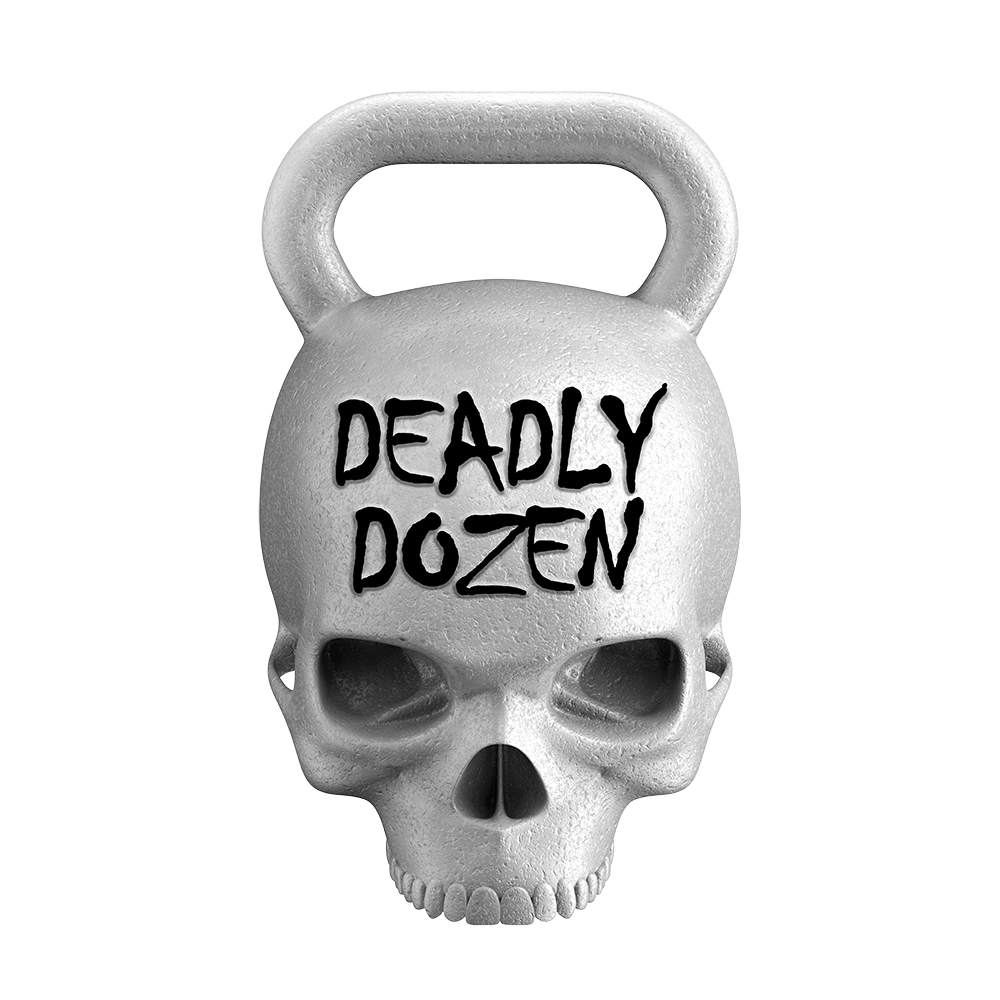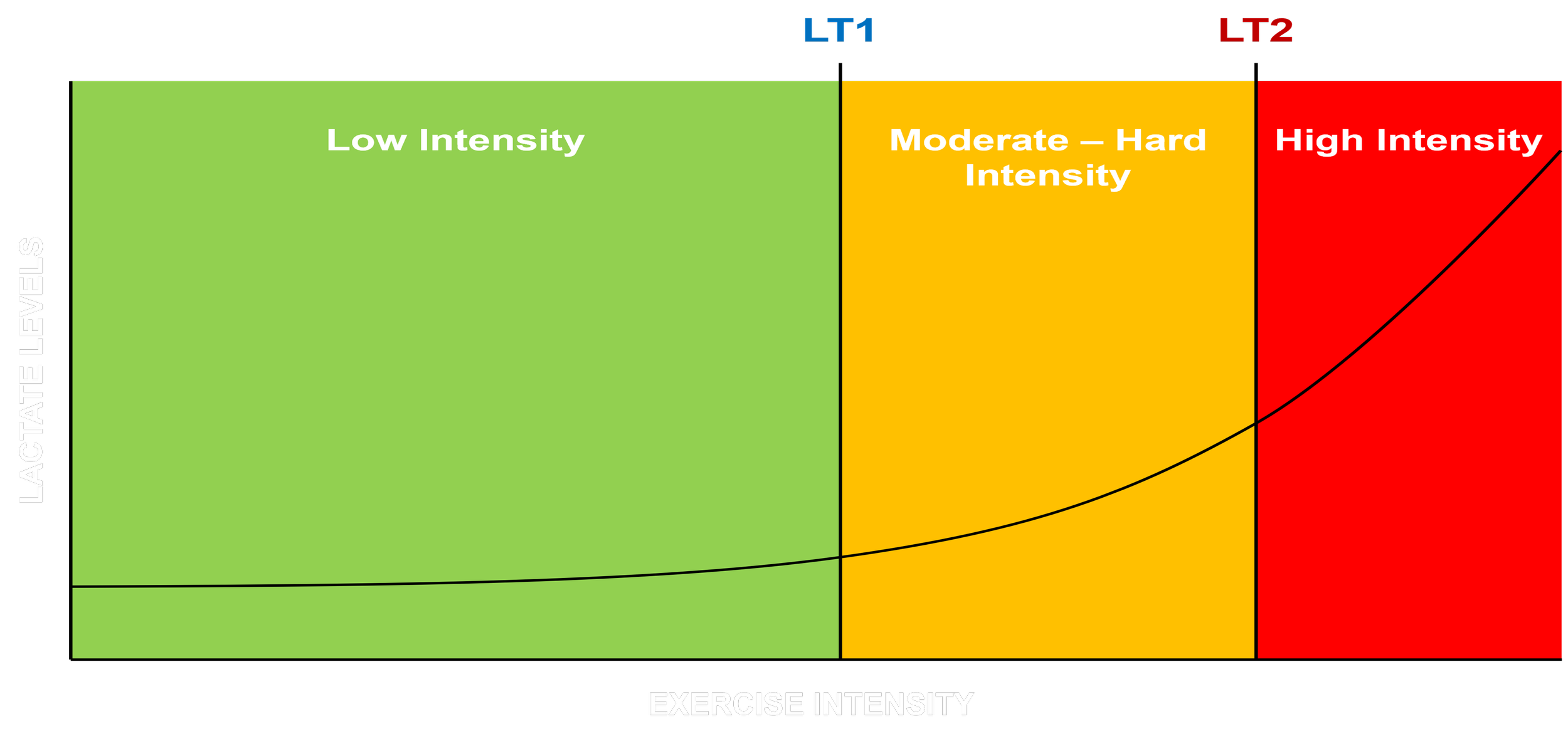Energy Systems
We have three energy systems:
ATP-CP System – this is anaerobic and doesn’t utilize oxygen
Lactate System – this is anaerobic and doesn’t utilize oxygen
Aerobic System – this does utilize oxygen
Note: All three of the energy systems have countless names, so don’t get confused if you hear someone refer to the ATP-CP system as the Creatine Phosphate system or Phosphocreatine system. In a training setting, we tend to refer to activities as either anaerobic or aerobic.
The term “energy system” (bioenergetic systems) refers to metabolic processes (chemical processes) that create energy in the body. These energy systems produce energy at different speeds (power) for varying durations (capacity), and therefore, training can be tailored to specifically target each system.
Although we can target specific systems, the three energy systems will develop holistically. For example, when multiple sprints are performed (working within the anaerobic energy systems), aerobic fitness will improve because the aerobic system is working throughout the entire training session to replenish what has been used – do not see it as one system doing all the work, see it as one taking the lead.
Some sports place emphasis on the energy system that provides energy the fastest, such as track and field events like the shot put, while others require all three in varying amounts, such as boxing or football. Sports will often have a bias towards one energy system, like a marathon runner, or that bias may change depending on the sporting situation.
The ATP-CP system has the highest power (produces energy the fastest) but the lowest capacity (can’t produce energy for very long). In contrast, the aerobic system has the lowest power (produces energy the slowest) but the highest capacity (can produce energy for a long time). The lactate system is in the middle of the two: The lactate system produces energy fast, and for much longer than the ATP-CP system, but it has nowhere near the capacity that the aerobic system has.
The Lactate threshold (often referred to as the anaerobic threshold, so named due to blood lactate levels being used to measure it, is the intensity at which the body transitions from primarily using the aerobic system to using the anaerobic lactate system, and therefore, waste products build up and performance diminishes – depending on genetics and an individual’s fitness levels, the LT is generally around 75-90% of max heart rate, but most commonly described as 85% of max heart rate.
We identify two lactate thresholds:
First Lactate Threshold (LT1): LT1 represents the exercise intensity at which lactate production starts to increase, but it is still being effectively cleared by the body. At this point, the body predominantly relies on aerobic energy production (using oxygen) to meet the energy demands of the exercise. This is often referred to as the point where you transition from light to moderate exercise and can be referred to as the Aerobic Threshold.
Second Lactate Threshold (LT2) or Onset of Blood Lactate Accumulation (OBLA): LT2 is the exercise intensity beyond which lactate production exceeds the body's ability to clear it and is considered to be the Anaerobic Threshold. This is often considered a marker of the transition from aerobic metabolism to anaerobic metabolism. At LT2, there's a noticeable increase in blood lactate levels, and this is accompanied by a significant increase in perceived exertion and a decrease in the ability to sustain the exercise intensity for an extended period.
In fitness racing, we spend a lot of time at LT2 (working at threshold pace): We need Aerobic Power to sustain high-intensity exercise over longer durations through oxygen-dependent processes. However, a lot of activities (lifting weights) will throw us over LT2, and it is common to finish races with a fare few heart rate spikes and a surprisingly high average heart rate.
Once we venture over LT2, our ability to sustain the activity levels starts to diminish rapidly and if we venture too far across, we may burn out completely and be unable to recover – we have all been there, starting off too fast and regretting BIG TIME. This is why Aerobic Power is a key attribute for many athletes.
Aerobic power refers to the quality of being able to produce energy quickly and hence maintain high intensities of work while remaining primarily within the aerobic system. In short, during a fitness race, if an athlete is able to work faster than you while remaining below LT2, then they are going to be able to maintain it and will be incredibly hard to beat.
Remember, although the anaerobic system is still kicking in, especially during times when the intensity ramps up (going up a hill or performing a Labour station), it is ultimately the aerobic system that allows us to recover from the additional fatigue caused – the aerobic system is the backbone of energy production.
Aerobic Power can often be described as “Speed at VO2 Max” (maximal oxygen uptake: the “V” is for Volume and the “O2” is for Oxygen), which refers to how fast someone can go at their VO2 Max.
VO2 Max is a physiological measure that reflects the maximum amount of oxygen your body can utilize during intense aerobic exercise. It's often considered a gold standard indicator of cardiovascular fitness and aerobic endurance. VO2 max provides valuable information about your body's ability to transport oxygen to your muscles and use it efficiently to produce energy during prolonged physical activity.
This all being said, athletes need to be well-trained to race at high percentages of their VO2 Max. An untrained individual might only be at 50-60% of their VO2 Max when they hit LT2. Well-trained individuals will be around 80% while elite athletes will likely be around the 90% mark.
There are several ways an athlete can develop their ability to hit high percentages of their VO2 Max before crossing LT2:
Developing an aerobic base through a large volume of low-intensity training below LT1 (often 60-120 minutes) – in a lot of endurance training programs, this takes up as much as 80% of the training
Specific threshold training (tempo work: holding a faster pace for a set time) to bring LT2 closer to your VO2 Max. The tempo runs usually involve 20-40 minutes of work at or just below LT2, or multiple bouts of 10-minute efforts (longer intervals) at or just below LT2 (note: typically “tempo” runs are slower than this and classed as continuous “moderately hard” runs)
Intervals and High-Intensity Interval Training (HIIT) to improve the ability to work within the upper limits of the energy systems – see below for a brief explanation of interval training
Strength training to develop efficiency, strength, power and fatigue resistance – this helps to improve Energy Utilization
Interval training is a broad term that encapsulates work involving bouts of moderate to high-intensity exercise followed by active or passive recovery/rest. Active recovery refers to engaging in low-intensity activity during the rest period rather than resting in a static position without deliberate activity (passive recovery).
HIIT is a specific form of interval training characterized by short bouts of high-intensity exercise followed by short periods of rest. SMIT (Supramaximal Interval Training, aka, Speed Endurance Interval Training or just speed/sprint interval training) involves very short bouts of maximal intensity work followed by much longer rest periods.
Note: We often describe low-intensity training (building an aerobic base) as PUSHING up the lactate threshold and higher-intensity training as PULLING up the lactate threshold – alongside “Push + Pull” Conditioning, we also have “Push + Pull” Strength Training: Pushing with the lower and upper body and pushing and pulling with the upper body.
VO2 max is expressed as a numerical value (which can be found on many smart watches) that represents the maximum amount of oxygen an individual can consume per kilogram of body weight per minute (ml/kg/min) during intense aerobic exercise. Let's break down what each component of this expression means:
ml (milliliters): This is a unit of measurement used to quantify the volume of a substance. In this case, it represents the volume of oxygen consumed
kg (kilograms): This is a unit of measurement for mass or weight. In the context of VO2 max, it refers to the individual's body weight
min (minute): This is a unit of time, indicating that the measurement is taken over the course of one minute
Put together:
ml/kg/min (milliliters of oxygen consumed per kilogram of body weight per minute): This unit expresses the amount of oxygen a person's body consumes while exercising, standardized by their body weight and measured over one minute of intense aerobic activity
For example, if an individual's VO2 max is measured as 45 ml/kg/min, it means that they are able to consume 45 milliliters of oxygen for every kilogram of their body weight per minute of intense exercise. Therefore, it is clear to see how an individual's VO2 max score is a key indicator of cardiovascular fitness and aerobic endurance/capacity.
The aerobic system is by far the most adaptable. With the right training, we can see drastic changes in both aerobic capacity (how far we can run) and aerobic power (how fast we can run a 2-5km, for example). The lactate system is the second most adaptable. However, this pales in comparison to the aerobic system; rather than having many minutes and hours to work with, we only have a couple of minutes.
We are NOT going to increase our anaerobic capacity from two minutes to six minutes. Still, training anaerobically (above the threshold) will improve our ability to tolerate the stress the body is under and reprocess the waste products into more energy using the aerobic system (the aerobic system saves the day again).
Finally, the ATP-CP system, which is famous for the first few seconds of activity up to around ten seconds, is by far the least adaptable. Therefore, our aim is not to improve the power or capacity of this system by any real stretch but instead to improve our utilization of the energy we produce. For example, we referred to strength training and plyometrics as conditioning because we are conditioning the tissues to utilize the energy as efficiently as possible. When it comes to many activities (both short and long duration), it is not always a lack of energy that results in the regression or cessation of the activity, but also things like coordination erosion, which can occur when operating at top speeds for more than a few seconds and the motor control systems start to break down and lose the ability to efficiently coordinate movement patterns. Or mechanical breakdown, where the tissues can no longer handle the stresses of the activity.
Energy utilization is heavily dependent on technique. For example, it would not be fair to have a runner perform a fitness test that involved rolling with a Jiu-Jitsu Black Belt for five minutes because they will be absolutely exhausted if they don’t have the technique to move efficiently. This is also why cycling-based fitness tests can be great because cycling is not heavy on technique, even compared to running and rowing.
Coach Jason Curtis
Founder & Race Director



